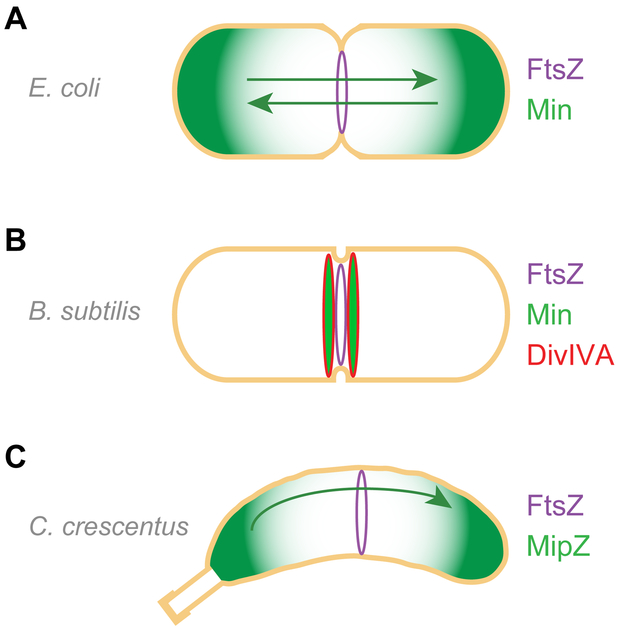Figure 2.
Regulation of cell division in model organisms is achieved predominantly by negative regulators. (A) In E. coli, proteins that comprise the Min system (green), which prevent FtsZ (purple) ring assembly, oscillate between the poles and inhibit cell division close to cell poles. (B) In B. subtilis, the Min system (green) is recruited to sites adjacent to newly forming septa by DivIVA (red); it does not mediate division site selection, but maintains cell division fidelity by preventing aberrant septation from occurring at mid-cell adjacent to a newly formed septum. (C) In C. crescentus, MipZ (green)interacts with chromosome-bound ParB and co-migrates to the stalk-less pole and displaces polar-localized FtsZ (not shown), to permit FtsZ ring assembly at mid-cell. The negative regulators of FtsZ are shown in green. Nucleoid occlusion system is not depicted for clarity.

